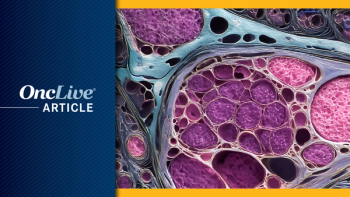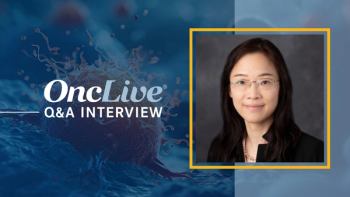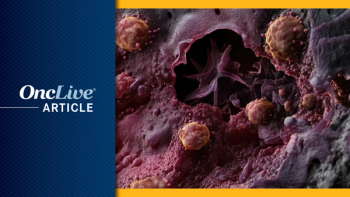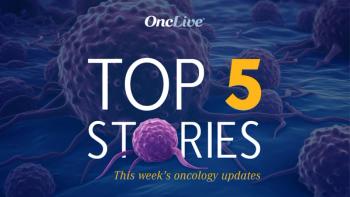
Detection of AR-V7 in Prostate Cancer
Transcript:
Andrew J. Armstrong, MSc: There are 2 AR-V7 assays that are really coming close to market. The Epic Sciences assay is one of the first, as well as the Johns Hopkins QIAGEN assay. The Epic assay is a protein-based assay where the blood cells are smeared on a slide of glass, where all the cells are interrogated under a microscope and with a software program that looks at every single cell in that tube of blood. Multiple slides are made, and each cell is annotated with an immunofluorescent marker, such as for white blood cells and tumor cells. Those tumor cells are then counted, and the marker of interest, which is AR-V7 nuclear expression, has been quantified on a per-patient level. So, any detection of AR-V7 in the nucleus is considered a positive test.
Just like the Hopkins assay, which looks at PCR detection in the RNA, the prevalence of a positive test using the Epic assay goes up with resistance and with treatment sequences. A positive test using the Epic assay is in about 5% or 10% of patients in the frontline setting, and it goes up to about 10% to 20% or 30% as the disease progresses. So, the usefulness of the test really becomes important after abiraterone or enzalutamide particularly.
The second AR-V7 test, which was developed at Johns Hopkins by Dr. Luo’s lab, is an RNA-based expression. A very specific primer is developed to the cryptic exon of AR-V7, which is unique for that sequence, and is amplified and then detected in the circulating tumor cells of an enriched blood specimen. So, again, a liquid biopsy test—not visible in a cell but a kind of whole-cell extraction approach where you can measure the AR-V7 at the RNA level. A positive test is really defined using both positive and negative controls and then amplified RTP-CR cycle.
This is a very simple test, with rapid turnaround just like the Epic Sciences assay, within 1 to 2 days. And a positive test is, again, associated with rapid resistance and a low response rate to abiraterone and enzalutamide. So, both tests really do appear to have some predictive value. They certainly have poor prognostic value.
I want to point out that neither of these tests yet has been externally validated, so that’s actually our ongoing work is to compare these tests head-to-head in a prospective multicenter trial where there’s an external validation component to this study. We call this the Prostate Cancer Foundation November Challenge Grant. And this challenge study has enrolled 120 men. We completed enrollment in December of 2016. We expect to have results within about 2 or 3 months from today, and those results are anticipated to prospectively validate both the Epic Sciences AR-V7 test and the Hopkins QIAGEN AR-V7 PCR-based test. And all the patients in the study are either frontline or second-line therapy castrate-resistant patients who are treated at 1 of 5 different large academic centers around the United States and then followed prospectively for survival-based outcomes.
Transcript Edited for Clarity

























































































